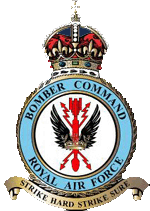Dunholme Lodge Airfield History

(Map edited to show the airfield and runways between 1940-45)

© Crown Copyright/MOD 2010
53°17'33.4"N 0°30'14.0"WRunways:
04/22 6000ft x 150ft - 10/28 4500ft x 150ft - 16/34 4200ft x 150ft
It is easy to drive across the former Dunholme Lodge and indeed, along one of its runways, without realising you are on what was a large WWII bomber airfield. Construction of a standard Class 'A' airfield commenced in September 1942 on land just west of Welton, although fields at the site had been used during 1941 to disperse Hampdens from nearby Scampton. Dunholme Lodge had the standard three runway configuration although one of the subsidiaries was longer than normal at 1700 yards. The technical site was established around Dunholme Lodge, off the eastern perimeter track with the communal & accommodation sites dispersed around Welton. One T2 hangar was located on the technical site whilst the second was off the southern perimeter track near the bomb stores. The B1 hangar was on the south-western edge of the airfield.
Dunholme Lodge opened in May 1943 under 5 Group. The first operational unit was 44 Squadron, which arrived from Waddington on 31st May 1943. The squadron operated their Lancasters from Dunholme Lodge until 30th September 1944, when they moved to RAF Spilsby. On 17th April 1944, they were joined by 619 Squadron who stayed until 28th September when they moved to Strubby. In September 1944 the airfield was transferred to 1 Group. On 22nd October 1944, the final operational unit to be based at the airfield arrived, 170 Squadron equipped with Lancasters. They stayed at Dunholme Lodge for just over a month before departing to Hemswell on 29th November 1944.
Following this, the airfield was closed to operational flying. It was used towards the end of the war by General Aircraft Ltd for the modification of assault gliders, principally the Hemilcar. After the war, Dunholme Lodge was closed but retained by the military. It had a brief resurrection between 1959-1964, when it housed Bloodhound anti-aircraft missiles.
Very little remains of the airfield today, the eastern end of the east-west runway is the largest surviving part. The former technical site is now a private farm and some buildings are still extant on this.
| Date | Squadron | Notes |
|---|---|---|
| 1941 | Station opened as a satellite for RAF Scampton. | |
| May 1943 | RAF Dunholme Lodge fully opens. | |
| May 1943 | No.44 Sqn | Operating the Avro Lancaster. Left Dunholme in September 1944. |
| September 1943 | No.49 Sqn | Operating the Avro Lancaster. Left Dunholme in October 1943. |
| April 1944 | No.619 Sqn | Operating the Avro Lancaster. Left Dunholme in September 1944. |
| October 1944 | No.170 Sqn | Operating the Avro Lancaster. Left Dunholme in November 1944. |
| 1945 | Station put on care and maintenance. | |
| April 1959 | No.141 Sqn | Operating the Bloodhound missile units. Squadron disbanded in March 1964. |
| 1964 | RAF Dunholme Lodge closed. |
